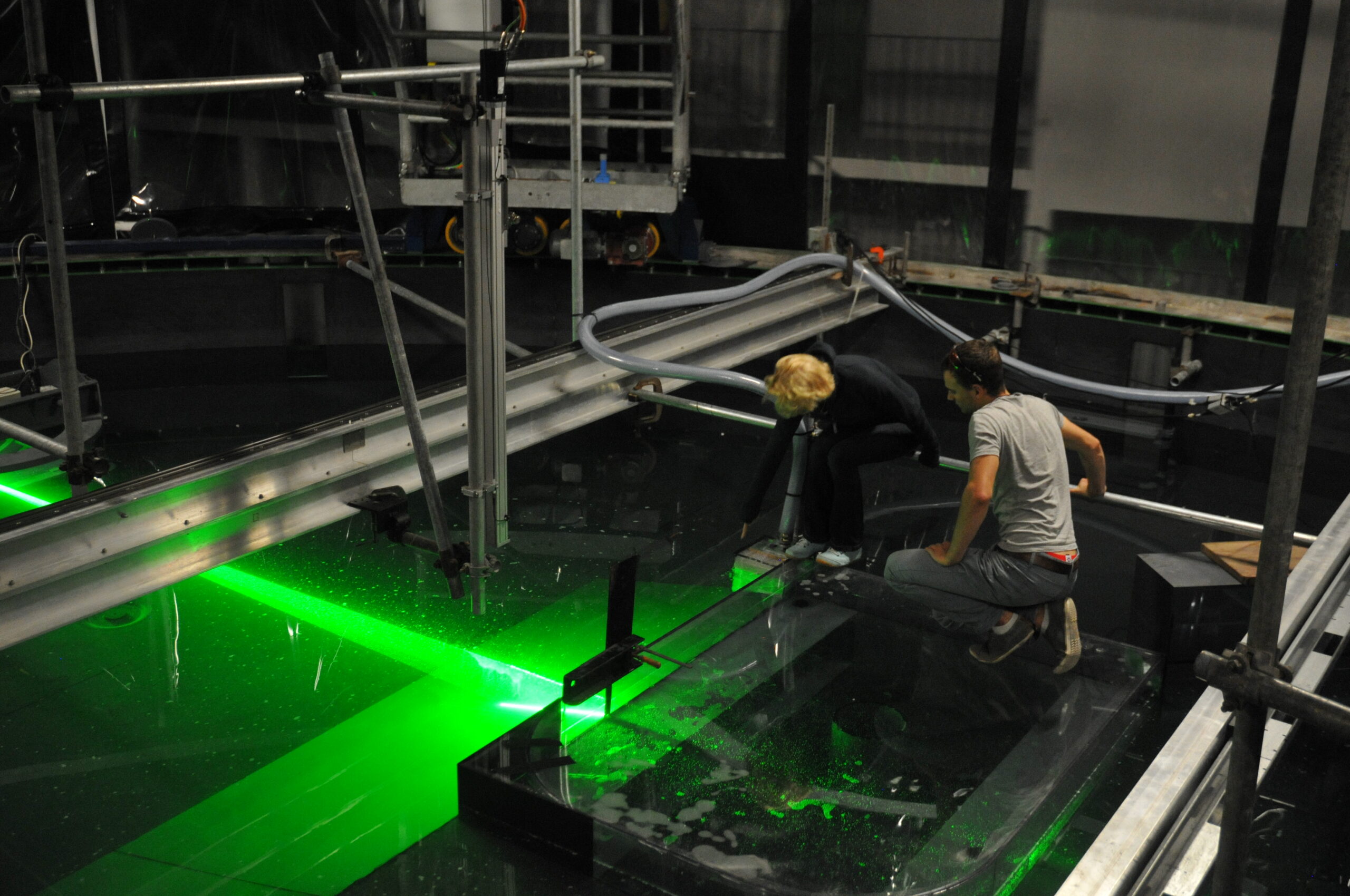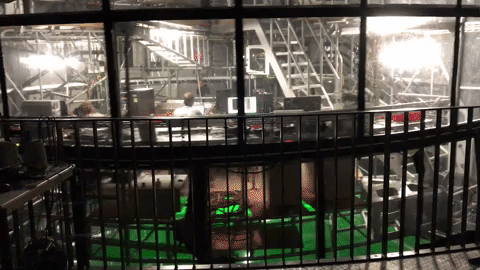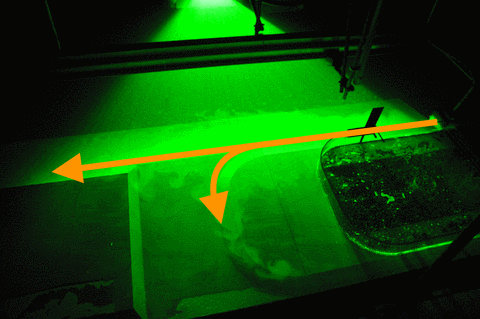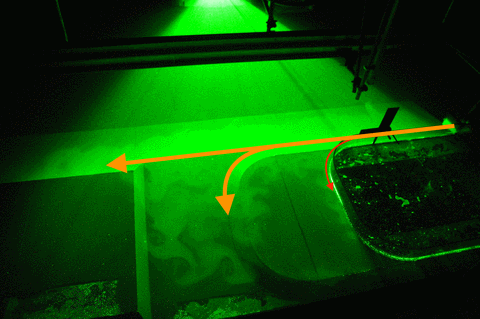Written by Svenja Ryan
After our excursion to ‘real’ Antarctica, we are back in the idealised world. Hopefully you all have followed the blog and have seen how our continental shelf has been constructed and the source for our current has been tested. The same thing has been done by one of our colleagues, Kjersti, on the computer to then run it with a regional ocean model. In Figure 1 you can see the similarity of the set-up that she created to the one in our tank. The advantages of here experiments are that she can add a wind-forcing of any strength at the surface and can also change the surface temperature and salinity fields to mimic the seasonally varying effect of sea ice. Furthermore, she located a dense source at the end of the trough representing the dense water outflow.

In her recent publication (Daae et al., 2017) she uses this model to study the sensitivity of the warm deep water entering a continental shelf with a coastal trough to the magnitude of wind stress, the shelf salinity and the upper-layer hydrography. She finds that stronger along-slope winds create a stronger slope current which is also shifted toward shallower isobaths, causing a stronger interaction of the flow with the trough. At low wind speeds the core of the current is located below the depth of the sill and is not affected. The southward transport of warm deep water increases for a denser outflow and higher salinities on the shelf. This effect is stronger for weak winds compared to strong winds, potentially because a strong barotropic flow passing the mouth of the trough will create less baroclinic instabilities.
They find that the warm deep water mainly accesses the shelf when no work against the buoyancy force has to be done. This is the case when dense water on the shelf connects the density surfaces between the shelf and off-shelf water masses. Furthermore, more warm water is found on the shelf in summer, when a fresh surface layer is present due to the sea ice melting. It induces a shallow eddy overturning cell that acts to flatten the isopycals, hence providing easier access to the shelf.
You see that you can sort of play god with these models, but you actually have to be very careful to choose all your parameters correctly and in a way that they representable for the processes in nature. Handled with care, models provide another important tool for understanding the climate system and individual processes.
—
Daae, K. B., Hattermann, T., Darelius, E., & Fer, I. (2017). On the effect of topography and wind on warm water inflow – An idealized study of the southern Weddell Sea continental shelf system. Journal of Geophysical Research : Oceans, 122, 2017-2033. http://doi.org/10.1002/2016JC012541


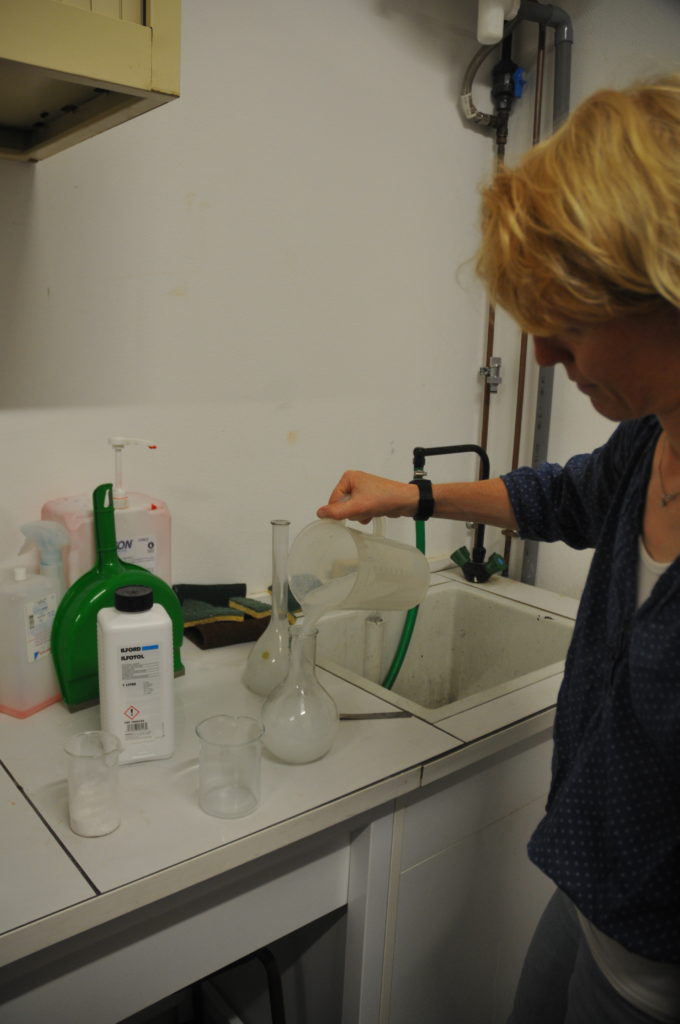

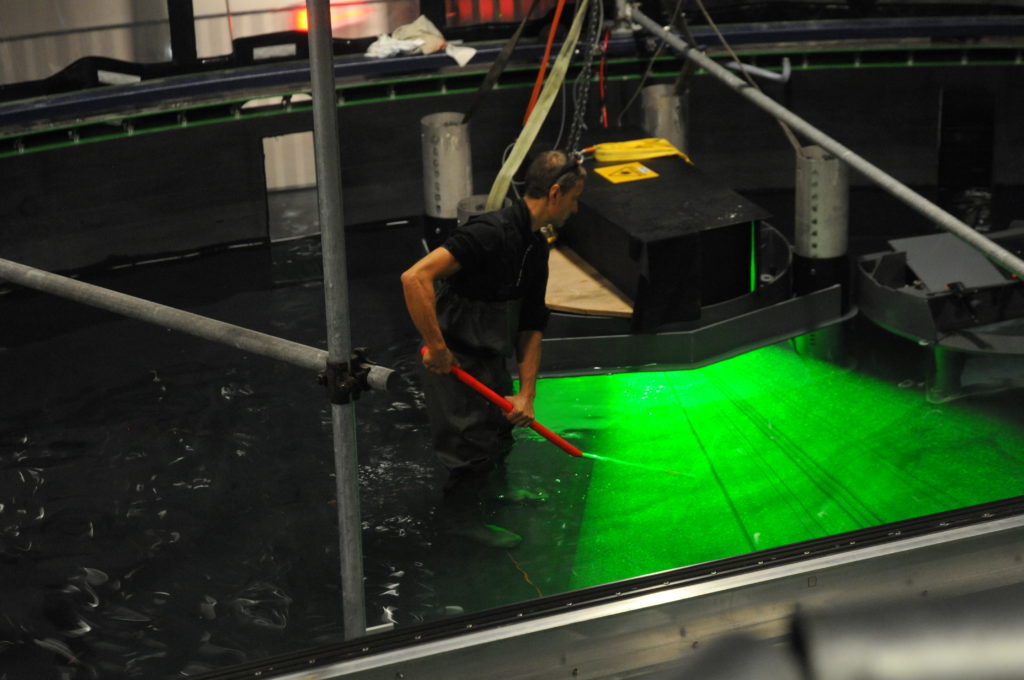
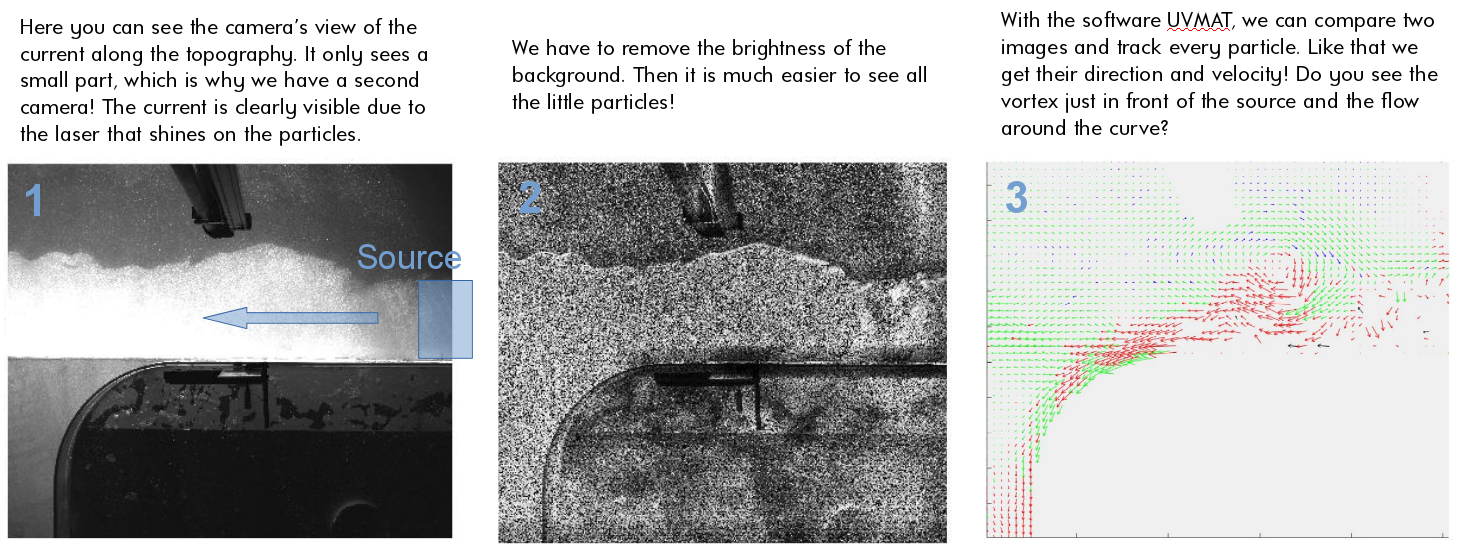


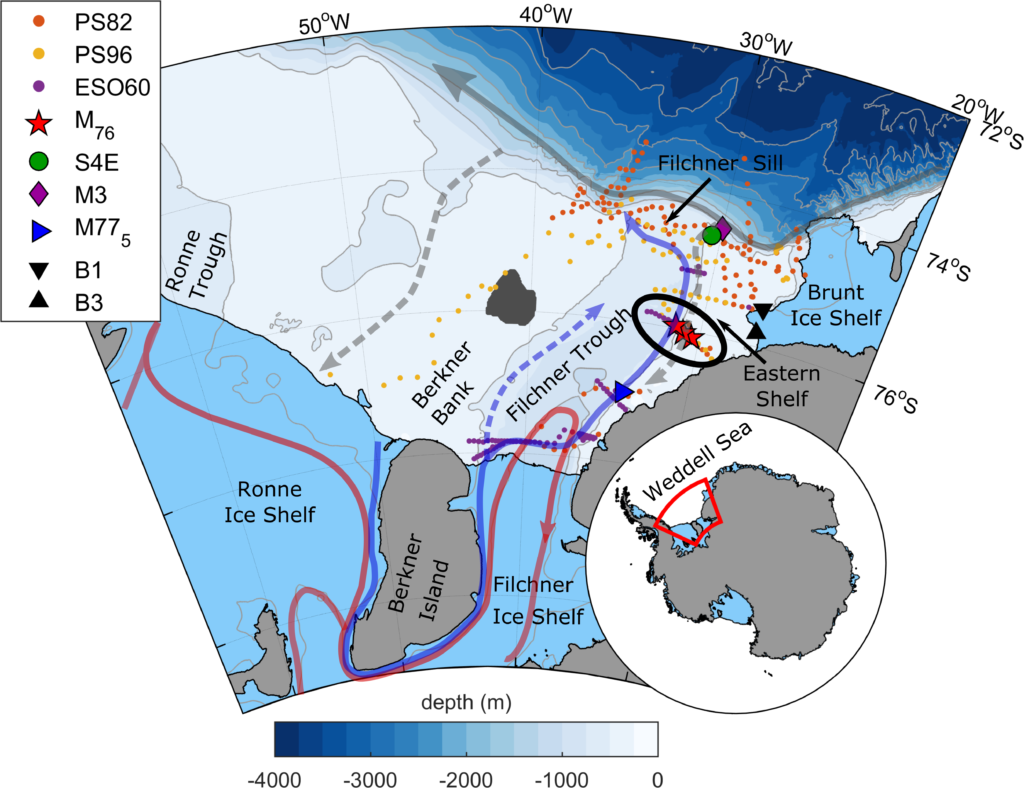
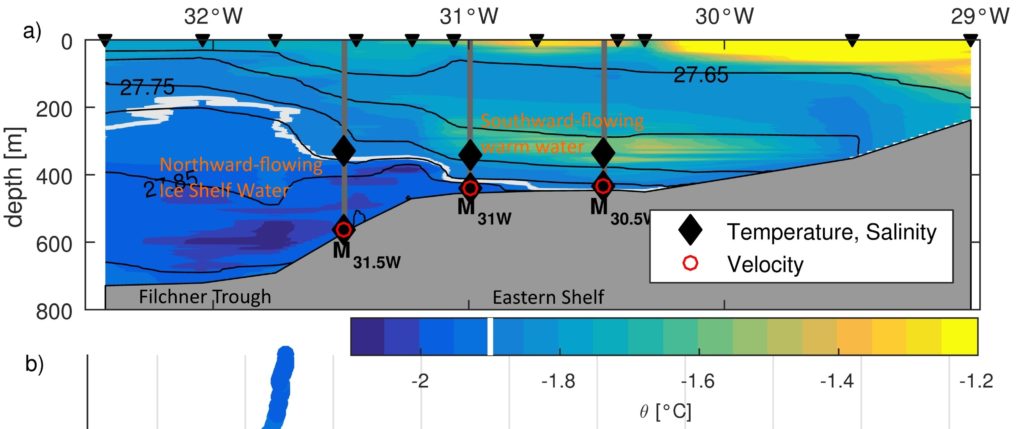
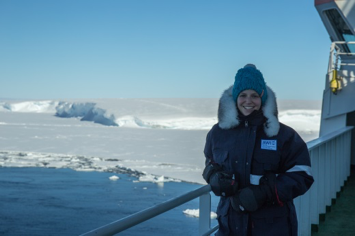
 I did my Bachelor (Physics of the Earth’s System) and Master (Climate Physics) degree in Kiel, Germany, where the University of Kiel and the GEOMAR have
I did my Bachelor (Physics of the Earth’s System) and Master (Climate Physics) degree in Kiel, Germany, where the University of Kiel and the GEOMAR have

